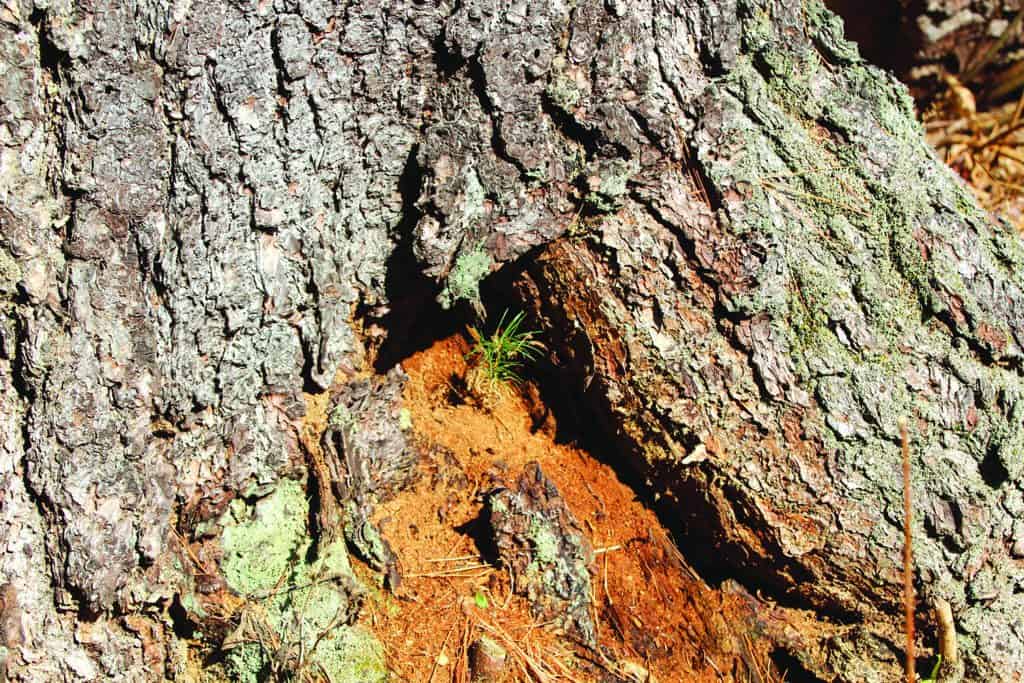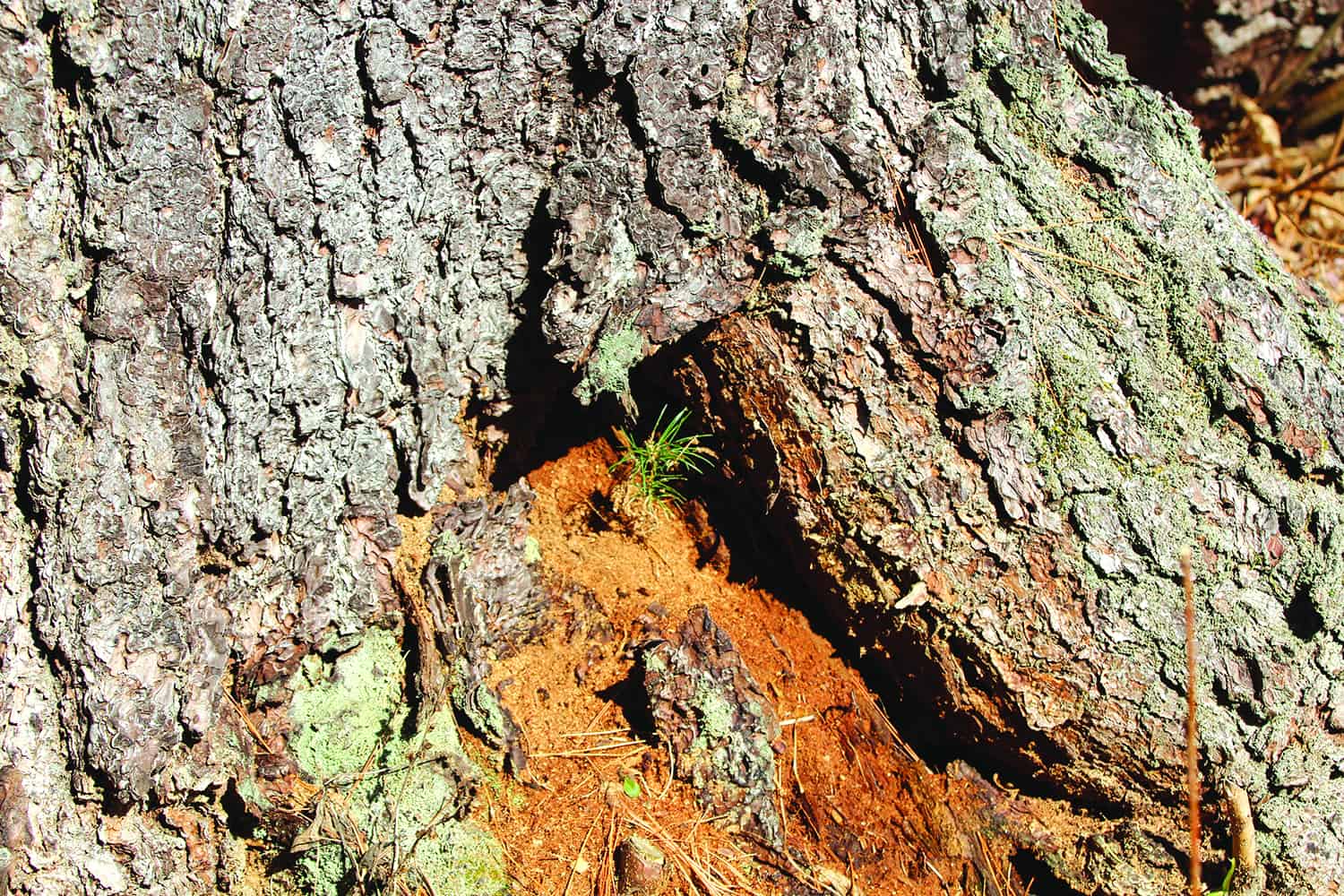
By Gary Salmon
At first I didn’t even notice it nestled under the root flare of a big white pine stump cut several years ago. But the idea of a white pine seedling growing while being sheltered by its larger former self was too much to ignore. The little 2-inch tall white pine seedling germinated in the rotted wood from the pine trunk with little in organic matter but loose enough for a naked seed to at least get started.
It barely had a bundle of needles, five per bunch which identifies it by species. Like all white pine seeds (about 30,000 of them per pound) they have to come in contact with bare soil to grow and that’s where the difficulty starts. A white pine cone has two seeds per scale with a good cone crop every 2-5 years. Even before they leave the security of the cone the losses start. Squirrels cut them off and eat/store the seeds for winter as do several other mammals and birds.
Although wind borne and large in number with a germination rate of nearly 90% it is where they land that is key: a soil medium loose enough to allow them to lay under or on this strata over the winter.
Think about it.
Most wind borne seed lands on rock, or logs, or tree branches, or leaf litter, or water, or other impervious surfaces and do not survive. There is little actual exposed soil available for seeds to grow unless the soil was abandoned agricultural land, burned over, or otherwise disturbed. And then there is the sunshine, a commodity needed in abundance. Both must be present for a pine to germinate, overcome nearby vegetation by fast growth, and get to the sapling stage. White pine is so shade intolerant that it cannot grow under a canopy of its siblings where you might expect it to.
As to the future of my little seedling. It did at least get started from seed to seedling finding a spot soft enough to lay down primitive roots. But before it gets large enough for me to age it by counting each layer of side branches grown each year (white pine is one of the few trees that can be aged by whorl counting), it has to overcome a sterile soil mix, little available water, and the physical closeness of it’s larger stump shelter. A tree from one seed in a million but stranger things have happened.




